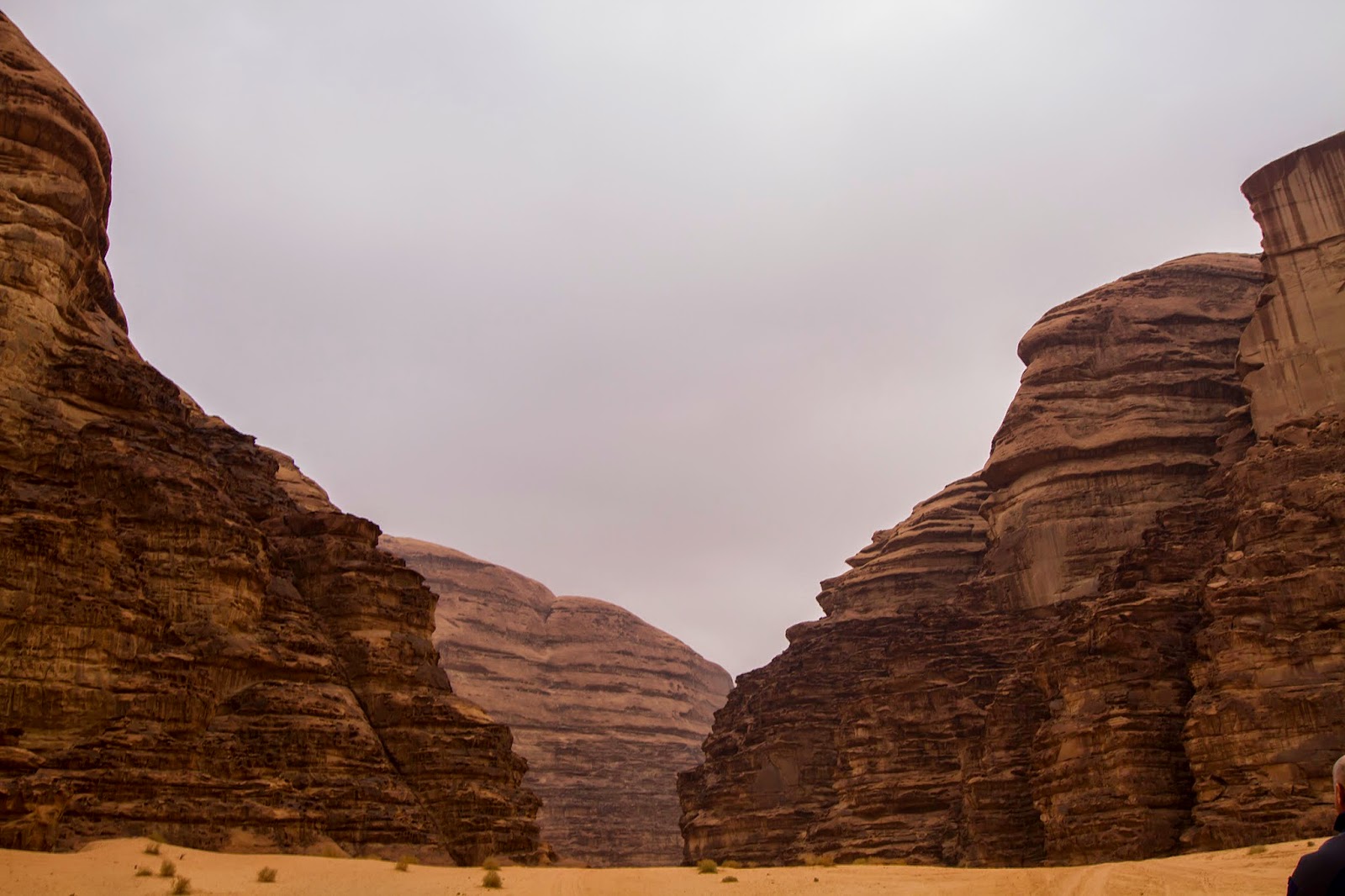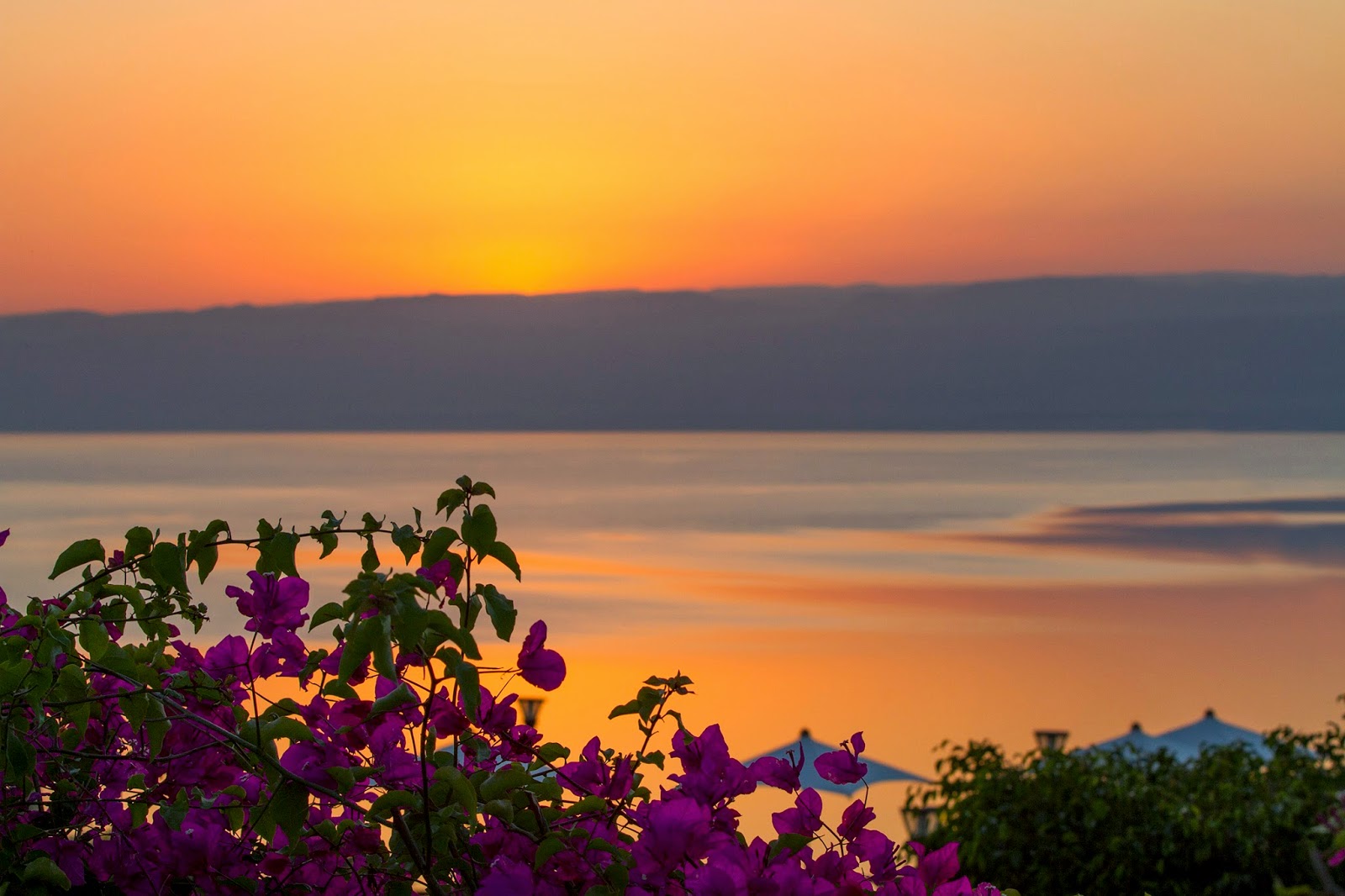After Petra, Jordan was already inching towards the top of my favorite destinations list. I was so enamored with its windswept ancient mysteries, its carved stony landscapes and the messy bustle of its cities. As I sat on the bus, my imagination fired up, lost in a reverie of recent memories and raping the "replay" button on Sting's Desert Rose (don't you judge me!), I was hardly aware of where we were heading next. And yet, where we were heading next was an amazing place that could easily hold its own against any other stop on our trip - the desert of Wadi Rum.
Wadi Rum, the Valley of the Moon. How frikkin' magnificent is that name? An ancient, weather-beaten landscape, Wadi Rum is where jagged cliffs meet red sand dunes to form a monumental, echoing vastness. It is home to many Bedouins who still practice their traditional lifestyle here, and the unusual topography, the multi-layered cutout horizon fading in the distance, shrouded men and herds of camels - are a big draw to visitors.
The day was overcast and cold. The sand was red, the wind was whipping it up the air, dissolving the mountains in the distance under a red haze. Our first introduction to the Wadi was from the back of a beat up Toyota pick up, as our entire group was given a
 |
| The incredible scenery of Wadi Rum. It is sometimes used as a setting for filming movie scenes that are supposed to take place on Mars. This seems very fitting. |
 |
| a written record of Wadi Rum - petroglyphs in 3 languages: Arameic, Arabic, Nabatean |
 |
| The next leg of our journey through Wadi Rum took place on more traditional transport |
Bedouin families still live in the area, in tent communities and cave dwellings that have changed little throughout the centuries. Though we were told that some of them have homes in the cities where they spend the week, and moonlight on weekends in their tents, selling tea and camel rides to tourists.
We visited one such family for some tea and demonstration of tying the keffiyeh, the traditional Arab headscarf.
Sadly, our time in Wadi Rum was far too brief to really let it sink in. The proper way to do it would be to spend a few days in one of the tent camps scattered throughout the desert. I would gladly brave the freezing night time temps to see the starry sky above Wadi Rum, and surrender to the rhythm of nomadic life for a short time.
From there, we boarded the bus for our last Jordan destination - the Dead Sea. Quick disclaimer here: I have been to the Dead Sea from the Israeli side back in the late 90s, so I knew pretty well what to expect from the experience, but I was excited to see Flo have a go at bobbing in those buoyant waters. We stayed at the beautiful Marriott Dead Sea Resort (in a posh suite, no less!) swimming in the sea, lounging by the pools, exploring the gorgeous grounds cascading down a steep bank towards the water, and smoking hookah in shaded patio cafes.
 |
| Lots of very well groomed and friendly cats run the joint here. Most are only too happy to come over for a snuggle. |
.jpg) |
| Resort Grounds |
With salinity of nearly 30%, it is 10 times saltier than sea water, and so dense that you can pretty much lounge on it. It's called Dead Sea because, obviously, it can't support any life, including bacteria, but the mineral composition of the water is very beneficial for health, which is why people come here for health reasons. The banks of the sea are lined with resorts and sanatoriums on both the Jordanian and Israeli side, and Dead Sea products are renowned throughout the world. The Dead Sea is a miracle of nature, and it's quickly disappearing. If you are planning on visiting, you have about 40-50 years left before it's gone. The rivers that feed it have been dammed so that no water reaches it anymore, and rainfall in this arid region is not nearly enough to replenish it.
This wraps up the highlights portion of our trip. We did see many other things along the way, including many important Biblical sites that would be interesting to anyone on a religious pilgrimage. Mount Nebo, where Moses was given a view of the promised land, but was never allowed to enter.
 |
| Mt Nebo |
 |
| St. George's church of Madaba |
 |
| villagers living in cave dwellings around Shobak Castle grounds |
 |
| Shobak Castle |
What makes Jordan such an interesting destination for Westerners?
We get a lot of raised eyebrows when we tell people that we went to Jordan. The implied inquest being, "why would you go to Jordan when the Amalfi Coast and Disney Cruises still exist?" I understand that can be disorienting to some people. Well, with all due respect to the Amalfi Coast (and none whatsoever to Disney Cruises), Jordan has something else to offer besides its notable attractions, that more popular destinations lack, and that I find absolutely crucial: perspective. It's not so foreign and unfamiliar as to give one culture shock. It is different enough to be exotic, but still has enough in common with our culture and mentality so as to provide a cushy landing to the icy plunge. This is not easily achieved in Middle Eastern countries. I am not ready to go to Saudi Arabia for this reason, by the way. Whatever it has to offer in historical monuments and natural idiosyncrasy, there's nothing there to soften the cultural blow, and I know I would hate it. In Jordan, on the other hand, I was intrigued and fascinated. I did not agree with or like everything I saw - far from it - but there was enough perspective, context, and common ground, that I went away having learned a lot, and acquired a more nuanced understanding, as well as empathy, and genuine good will.
Something all of us could use more of.













































































